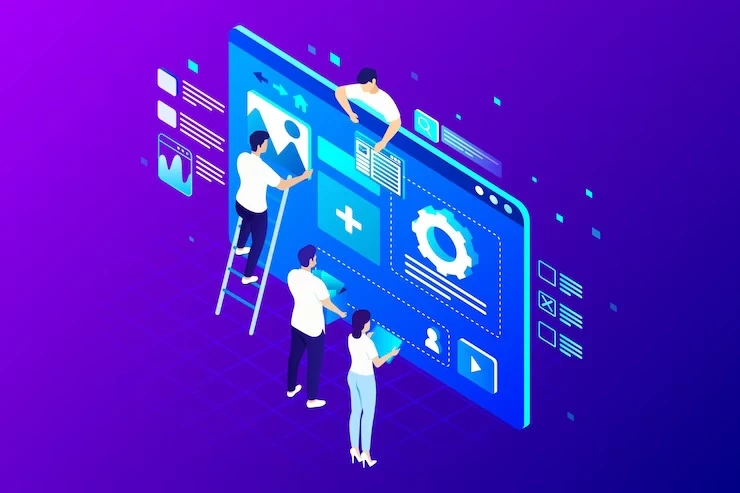In the competitive era, it's crucial for enterprises to deliver reliable experiences and meet user demands. However, many enterprises keep running their business applications on legacy platforms, due to the fact that replacement of such systems requires investing a huge quantity of resources. Indeed, applications built on legacy platforms cannot easily interconnect with modern infrastructure, thereby impeding digital transformation. Besides, such applications can no longer meet end-user needs and can be a financial liability for enterprises.
The only way for organizations to remain competitive is to modernize legacy applications. However, there's no denying the fact that modernizing legacy apps can be challenging and requires enterprises to spend more time and money. Despite the mentioned challenges, the modernization approach can generate greater business benefits. Modernization can bring long-term gains that offset drawbacks through more efficient resource usage, advanced security, faster deployment, and greater performance.
Understanding Legacy Modernization
In general, legacy systems are outdated platforms used by enterprises to build and host applications, processes, software, or infrastructure that are critical to run regular business operations. So, the process of modernizing legacy applications means restructuring the enterprise application that exists on a legacy platform using the support of modern and innovative technologies. For instance, by performing legacy modernization to Cloud, enterprises can update and optimize their applications to acquire better operational efficiency, resolve any technology constraints, fulfill customer expectations, and enable integration with other platforms.
Reasons to Perform Legacy Modernization
Expensive MaintenanceIt is well-known that the maintenance expense of a legacy system becomes unmanageable over time. Because of the complex functionality of the legacy OS and codebase, upgrading it would require more time and financial resources than contemporary platforms would.
In addition, many legacy systems like IBM iSeries require expensive infrastructure and hardware to maintain when it ages. Managing legacy data that is dispersed across several databases is also a cost-intensive process. Hence, legacy infrastructure modernization is indispensable for enterprises. By modernizing legacy systems, enterprises can save expenses in different forms, such as lowered security problems, minimal maintenance requirements of outdated systems, and reduced overhead.
Dwindling SecurityAnother challenge in running legacy systems is the lack of security updates. The applications hosted on legacy platforms usually have openings that allow hackers to exploit business data or networks. Such cyberattacks by hackers can yield a business-wide bottleneck for enterprises, resulting in a greater loss of revenue.
Whereas, modernization ensures that the business application works well with security standards, such as ASVS (Application Security Verification Standard), Authentication, Session management, and others. In addition, protecting software, applications, and infrastructure from virus attacks can be experienced through modernization.
Integration ProblemsEnterprises expect applications to boast features, such as data sharing, geolocation, end-user authentication, etc. By using third-party APIs, enterprises can quickly add functionalities and tools. However, outdated and older legacy platforms lack compatibility with third-party integrations.
An effective way to connect legacy applications with third-party platforms or systems is by hiring experts from a recognized legacy application modernization service provider. The experts can build custom APIs by using custom code in a minimal time. By enabling better app compatibility, enterprises can influence users at large and drive revenue.
Key Legacy Modernization Approaches
Application RehostingBy opting for this strategy, enterprises can shift their application completely from legacy infrastructure (on-premise mainframe) to the latest infrastructure like Cloud. This is simply a substitute approach since the application is still not restructured, only the hosting environment is changed. However, it can be useful for enterprises looking to eliminate capital expenses at once.
Moreover, this quick and low-risk strategy is highly sufficient for enterprises to drive digitization. Rehosting also offers the possibility to launch sub-applications in a faster timeline. For enterprises that need to see fast improvements at a minimal cost, a rehosting approach is the right choice. This approach can also reduce app latency by making functions closer to end users or enhancing the applications to effortlessly navigate through various types of infrastructures, including the Cloud.
Application Rebuilding and Re-ArchitectingRebuilding and re-architecting are considerably time-intensive processes. These processes involve modifying substantial portions of a legacy application to make it entirely new. Enterprises that perform this modernization by themselves may find it time and cost-consuming. As an alternative, hiring a skilled modernization team through an outsourcing model is ideal for rebuilding and maintaining applications. Modernization experts can provide the flexibility enterprises need to attract users. Also, experts make sure to check that rebuilt application adheres to vital security and compliance standards
Application RefactoringThis approach involves making minute enhancements to the legacy code and architecture over time, though the app functionality remains the same throughout the process. For many enterprises that are aware their solutions are outdated, this will probably be the ideal way forward, providing the least impact, a quicker learning curve, and long-term benefits. Over time, enterprises can make application changes gradually without the need for any interruption. That includes the splitting of specific parts of the code into new functions or microservices, which are easier to upkeep, upgrade, and shift to different infrastructure providers.
Summing Up
In a nutshell, implementing legacy app modernization can help enterprises to drive innovations and discover many new opportunities. However, before restructuring legacy apps, enterprises need to evaluate business objectives and determine the modernization approach accordingly. Consultants with rich expertise in modernization and migration can help businesses digitize operations at large.


